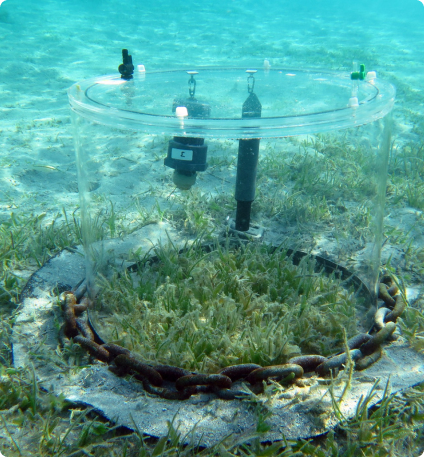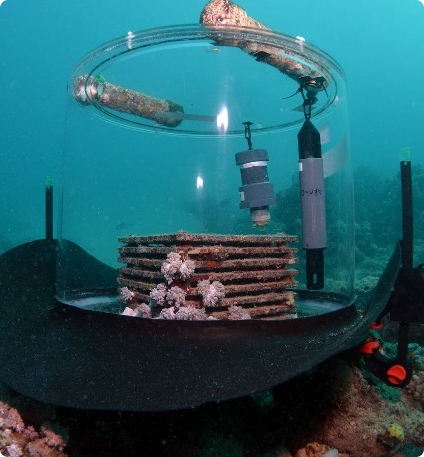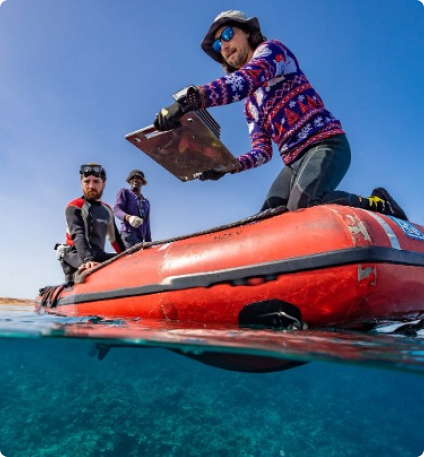Our invasive species research focuses on creating biosecurity frameworks to monitor non-indigenous species (NIS) and assess their ecological impacts in marine ecosystems. This includes methods for early NIS detection through the use of PVC settlement panels and sampling of mature fouling communities on artificial structures. The results will be critical to identify areas of ecological concern. The specimens collected contribute to the development of a comprehensive DNA reference library and specimen collection for the Red Sea and Arabian Gulf. These resources serve as baselines for understanding ecosystem changes due to NIS spread or other stressors. Additionally, our research explores the application of environmental DNA (eDNA) metabarcoding for efficient, large-scale detection of NIS, advancing insights into biosecurity and conservation strategies in these critical marine regions.
- Settlement panels: Settlement panels are deployed in different environments (ports, marinas, non-urbanized areas) following the Smithsonian’s standardized protocol. This ongoing project is aimed at the early detection of newly settled NIS and understanding the dynamics of the pioneer communities and how they are affected by the non-native species. In addition, sampling fouling communities from artificial substrates next to panel deployment locations adds to the baseline knowledge of the local mature fouling communities. Supplemented with measurements of basic environmental parameters, these studies provide not only a timely detection of newly introduced species, but also an understanding of NIS distributions and NIS interactions with the native biota in different environments. Once the panels are retrieved and fouling samples are taken, they are further passed on for a photo survey, collection of individual voucher specimens, and metabarcoding (see “Molecular work involved” section below). Work with individual vouchers involves integrative taxonomy: morphological, molecular, and ecological data are combined to enhance the reliability of identifications. Materials obtained (vouchers with attributed DNA sequences) are integrated into the reference specimen collection and the DNA regional library. This information is further used in taxonomic work: disentangling species complexes, verifying or denying the presence of certain species in the area, and describing new species.
- Molecular work involved: Following collection, we extract genomic DNA from water samples (eDNA),PVC settlement panels and samples of established biofouling communities (bulk DNA). DNA amplification of short fragments of COI and 18S rRNA is followed by high-throughput sequencing of the generated amplicons. Using bioinformatic tools, raw amplicon sequencing data is processed to generate tables listing all the amplicon sequence variants (ASVs) present in each sample.
- Risk assessment of non-indigenous marine species: A risk assessment of NIS in the Red Sea and Arabian Gulf is underway to identify potentially invasive species. Using specialized software based on a comprehensive bibliographic database, assessments are conducted by evaluating species traits, climatic adaptability, ecological requirements, and potential impacts under changing environmental conditions. For each species, a score is calculated to estimate the likelihood of becoming invasive. Recent assessments of certain species in this region have highlighted their potential to alter native biodiversity if not carefully managed. This systematic approach enables the prioritization of management actions by identifying species that pose the greatest threat to native species/biodiversity, contributing to the overall biosecurity strategy for marine ecosystems in Saudi Arabia.
- Identify High-risk routes for NIS introduction: High-risk routes for NIS introduction have been identified through an extensive analysis of global shipping data, highlighting vessel traffic, port interconnections, and environmental similarities. This process mapped direct and indirect pathways, quantifying vessel residency to highlight key ports and routes for biosecurity intervention. Through this approach, invasion corridors with elevated NIS introduction potential have been pinpointed, providing a basis for targeted biosecurity measures within the broader strategy for Saudi Arabia’s marine ecosystems.
- Biosecurity Framework: Currently, Saudi Arabia’s biosecurity framework is in the development phase, with efforts focused on stakeholder engagement to ensure a comprehensive approach tailored to national needs. This framework aims to enhance the management of marine NIS by strengthening environmental protection and supporting the sustainable use of the Kingdom’s marine resources. A multifaceted approach has been outlined, which includes an early detection and rapid response system specifically designed for Saudi waters. Advanced molecular tools are being developed, such as species-specific DNA primers for the quick identification of high-risk invasive species. Future distribution trends are being mapped using statistical models to pinpoint critical introduction hubs and areas of concern, allowing for targeted management interventions. Additionally, awareness materials and a Marine Invasive Dashboard are being created to support real-time data reporting and the visualization of invasive species’ spatial and temporal distributions.






